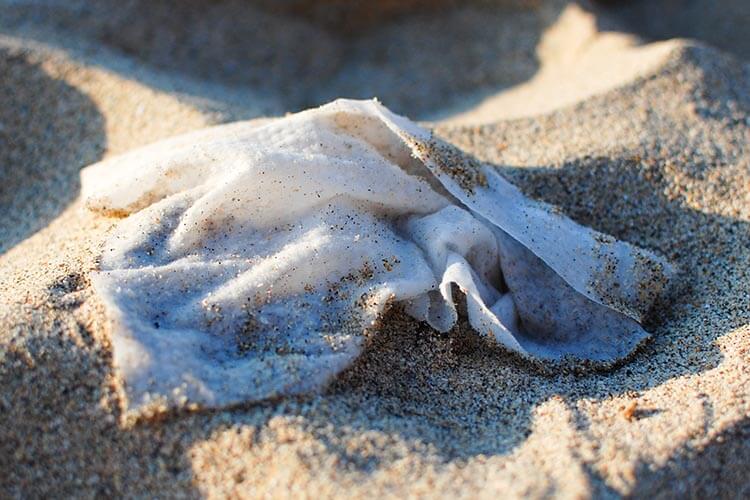
The Marine Conservation Society’s 2022 Beachwatch report has found that sewage-related litter is washing up on beaches all around the UK, with hot spots for pollution in the Northeast of England and Scotland’s central belt.
The year-round beach cleaning programme, which has been running for 30 years, asks volunteers to record any litter they find within a 100m stretch of beach. Analysis of the data by MCS has been used to influence policy decisions across the UK, including the introduction of carrier bag charges and bans on many single-use plastic items. The survey’s results also contribute to a global database, tracking pollution trends around the world.
Beachwatch data from 2022 found that at least one sewage-related item, such as wet-wipes and sanitary products, was found in 75 per cent of surveys conducted during the year.
Scotland’s beaches were found to be polluted with the ‘most flushed’ litter items. More than 30,000 wet wipes were found around the Firth of Forth and Firth of Clyde, from a total of 58,030 sewage-related litter items recorded across the UK.
Sewage-related litter makes its way into the UK’s rivers and seas when untreated sewage is released from storm overflows, originally introduced as a means of preventing sewage overflowing into populated areas during spells of extreme rainfall, but which MCS says are now routinely used for the management of sewage, even during dry weather.
More from the Marine Conservation Society

The data that are available shows that storm overflows are being used far too frequently across the UK, with an average of 29 discharges per overflow annually in England, 44 in Wales and 81 in Scotland, where the average duration of discharges is also highest, at 11 hours per recorded event.
‘The new First Minister [of Scotland] must prioritise action to drastically reduce the amount of sewage and sewage-related litter polluting Scotland’s seas,’ said Catherine Gemmell, Scotland Conservation Officer at the Marine Conservation Society. ‘With published information on less than 5 per cent of combined sewage overflows in Scotland, better monitoring is the first step in reducing the flow of sewage into our seas.
‘We also need to see action to stop pollution at source, including a ban on plastic in single-use wet wipes and support for reusable sanitary products as part of a Circular Economy.’
In England, the Marine Conservation Society has joined a legal case against the UK Government’s Department for Environment, Food and Rural Affairs (Defra) to protect English seas from sewage dumping.
The legal case seeks to compel the UK Government to rewrite its Storm Overflows Discharge Reduction Plan 2022, to impose tighter deadlines on water companies and redevelop the Plan to effectively apply to England’s coastal waters which are, currently, almost entirely excluded.
While the data for sewage-related litter is concerning, MCS says that the UK’s overall total of beach litter has declined – thanks, in part – to its Beachwatch initiative.
‘Thanks to our volunteers, we’re collecting year-round data which we use to campaign for action on ocean pollution,’ said Clare Trotman, MCS Beachwatch Officer . ‘The good news is that we’ve seen the amount of litter recorded on beaches decrease by 11 per cent across the UK compared to 2021.
‘Overall, the number of litter items found per 100m has decreased by 38 per cent since 2016, when litter levels peaked.’ Trotman added. ‘This highlights the effectiveness and influence of policies which reduce pollution, and the impact our volunteers have every time they join a beach clean.’
The Marine Conservation Society’s 2022 Beachwatch programme found that sewage-related litter across Scotland’s central belt was as high as an average of 88 items per 100m in Renfrewshire on the Firth of Clyde, and 274 items per 100m in West Lothian on the Firth of Forth.
To find out more about the Marine Conservation Society’s Beachwatch programme, visit the MCS UK website.


